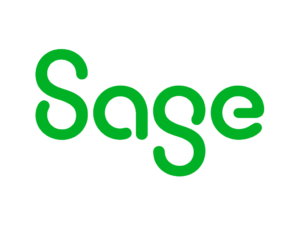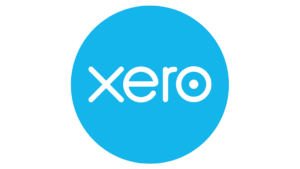
What is the VAT threshold?
By Tim Adler on Small Business UK – Advice and Ideas for UK Small Businesses and SMEs

The VAT threshold is the volume of annual turnover at which businesses are required to register for value-added tax (VAT).
Since April 2024, the UK VAT registration threshold has been £90,000.
VAT thresholds for previous years are as follows:
-
- 2014–2015 – £81,000
-
- 2015–2016 – £82,000
-
- 2016–2018 – £83,000
-
- 2019-2024 – £85,000
-
- Since 1 April 2024 – £90,000
Once your business’s turnover reaches the VAT threshold, you have 30 days to register for VAT with HMRC. When this process is complete, your business has extra responsibilities including:
-
- Charging VAT on your products or services
-
- Paying VAT on the goods or services supplied by your vendors
-
- Submitting your VAT return to HMRC every quarter (unless you opt into the Annual Accounting Scheme*) and maintaining a VAT account and records using Making Tax Digital (MTD)-compatible software
*Most VAT-registered businesses file quarterly VAT Returns (some monthly). If you opt into the Annual Accounting Scheme, you file one return per year with instalments. All VAT-registered businesses must keep digital records and file via MTD-compatible software
VAT registration
Registering for VAT is a legal requirement for businesses that exceed this threshold, and the threshold is reviewed regularly by HMRC.
You need to register for VAT if your small business has earned more than the VAT threshold within any 12-month period or if you expect your VAT taxable turnover to cross the VAT registration threshold within the next 30 days.
The 12-month period in question does not necessarily need to coincide with the tax year. You should regularly check whether your VAT taxable turnover for any given 12-month period has crossed the current VAT registration threshold.
Pro tip: Even if you have just crossed the £90,000 VAT registration threshold, you must register within 30 days of the end of the month in which you crossed the line. It is important to keep a close eye on your turnover on at least a monthly basis, particularly as you approach the threshold.
Is VAT threshold on turnover or profit?
The VAT threshold is measured on turnover. Your turnover is the total value of everything you sell that is not exempt from VAT.
VAT exempt goods and services include:
-
- Education and training when provided by eligible providers
-
- Healthcare and medical treatment registered professionals/institutions
- Insurance, finance, postal services, betting/gaming/lotteries
-
- Funeral plans, burial or cremation services
Zero-rated goods and services include:
-
- Incontinence products, maternity pads, sanitary protection
-
- Books, magazines, newspapers, and e-publications
-
- Baby clothes (meaning clothing designed and only suitable for young children)
-
- Children’s clothes and footwear
-
- Cycle helmets
- Installation of qualifying energy-saving materials (0% until 31 Mar 2027)
Different VAT rates
| Name | Current rate | Description and examples |
| Standard | 20% | The standard rate of VAT is the default rate – this is the rate that’s charged on most goods and services in the UK unless they’re specifically identified as being reduced or zero-rated. |
| Reduced | 5% | Domestic fuel and power, insulation of energy-saving materials, children’s car seat, etc. |
| Zero | 0% | Food (not meals in restaurants or takeawys though), books/newspapers, children’s clothes/shoes |
| Exempt | n/a | VAT exempt goods and services such as antiques, healthcare and funeral services, must not have VAT charged on them |
| Outside the scope | n/a | Items completely outside of the UK VAT system include MOT tests |
How VAT threshold is calculated
You can calculate your annual taxable turnover by adding together your total sales (excluding any VAT) across your products and services over any rolling 12-month period.
For example, if you sold £65,000 worth of goods over 12 months and £30,000 worth of services, then your total VAT taxable turnover would be £95,000.
Because you have crossed the £90,000 VAT threshold, you must register for VAT and start charging it on applicable goods and services sold from that point onward.
Sole traders and VAT – Whether you pass the VAT threshold or register for VAT voluntarily, we explain everything you need to know about Value Added Tax
Accounting software to help with your VAT return
As a VAT-registered business, you must submit your VAT returns every three months, even if you have no VAT to pay or reclaim, and you must do so using Making Tax Digital (MTD)-compatible software.
The following providers offer accounting software are compliant with MTD and can help you to calculate your VAT and bill and submit your return.
Sage

Sage offers AI-powered, cloud-based accounting software that allows you to calculate your VAT and submit your return directly to HMRC. You can choose the frequency and set defaults to reduce errors.
Moss

Moss’s platform makes it easy to manage all your accounting needs in one place. It uses AI to automatically organise your data and prepares it for your records, making VAT returns a breeze.
Xero

Xero does all the hard work for you, including calculating your VAT according to your scheme (flat rate, cash etc.), automatically making adjustments based on your invoices and bills data, and filing your return.
What if it’s just a blip?
It’s possible that your business will cross the VAT threshold but only on a temporary basis. Therefore, it’s possible to request your small business has a registration “exception”, which means you don’t need to register for VAT.
This VAT registration exception is something you must apply for – it’s not enough to say nothing and argue the case later.
Write to HMRC and explain the circumstances as to why your are applying for permission not to register. Reasons for not registering for VAT, even if you have crossed the VAT threshold, include:
-
- Crossing the VAT threshold was a one-off event
-
- That there’s no likelihood of your crossing the VAT threshold again in the near future
You will also need to supply supporting documents to support your case.
Pro tip: Even if HMRC accepts your application for a VAT exception, remember that it is a one-off and not an ongoing exclusion. You’ll still need to register for VAT if your turnover again exceeds the VAT threshold.
Registering for VAT voluntarily
You can still register for VAT voluntarily, even if your taxable turnover does not exceed the VAT registration threshold of £90,000.
The advantage of this is that you become cheaper if you’re customers are also registered for VAT. They can claim VAT back on whatever they buy from you, saving them 20 per cent compared to if you weren’t registered for VAT.
It is estimated that around 20 per cent of all VAT-registered businesses trade below the VAT registration threshold.
Also, if you’re just starting up and you know that you’re quickly going to hit the £90,000 VAT threshold, or that you will be mostly selling to VAT-registered businesses, you can claim your VAT on the costs of setting up – saving you money in the short term.
Do grants count towards VAT threshold?
Grant funding is typically outside the scope of VAT. However, if the funder receives a supply in return, some payments, which can be called ‘grants’, do count if they’re consideration for a supply.
How do I pay VAT to HMRC?
Of course, you could just hold your nose and hand 20 per cent of your turnover over to the taxman but there are legitimate and official ways to reduce you VAT bill and smooth out payments to help cashflow:
-
- Flat Rate Scheme – If your annual turnover is less than £150,000, you may join this scheme to pay VAT to HMRC at a fixed-rate percentage of turnover, depending on industry. VAT rates under the Flat Rate Scheme range from 4 per cent to 14.5 per cent compared with 20 per cent standard rate. If you’re part of the Flat Rate Scheme, you must leave once your turnover goes above the compulsory deregistration threshold of £230,000.
-
- VAT Cash Accounting Scheme – This works similarly to regular cash accounting, where VAT is paid and recorded when money changes hands, rather than when an invoice is received. To join the VAT Cash Accounting Scheme, you must have a VAT taxable turnover of £1.35 million or less. There’s a compulsory deregistration threshold, and you must leave the scheme if your taxable turnover is more than £1.6 million.
-
- Annual Accounting Scheme VAT – Under the Annual Accounting VAT Scheme, businesses submit one VAT Return per year and make advance payments towards their VAT bill. You can join the scheme if your VAT taxable turnover is £1.35 million or less. Companies participating in the Annual Accounting VAT Scheme must leave when their turnover crosses the £1.6 million deregistration threshold.
How to stay under the VAT threshold
If you’re a tradesman especially, having to charge your customers an additional 20 per cent is not very palatable – it puts you at a disadvantage compared with rivals.
One way to stay under the threshold is to split your business into two or more separate businesses, according to Checkatrade, but each part of your company needs to offer different services to make the distinction clear. Having separate bank accounts for each business is also helpful. However, there has to be a legitimate reason for doing the split. If HMRC suspects artificial splitting, you could be hit with back-dated VAT and penalties.
Sole traders increasingly avoid charging VAT – Tens of thousands of small businesses deliberately stay small to avoid charging VAT, which means you have to hike prices if you wander over the £90,000 threshold
More on VAT
Import duty and zero VAT rated goods – If I want to import zero VAT-rated goods, will I still have to pay import taxes on them? Where can I find more information about this?
The post What is the VAT threshold? appeared first on Small Business UK.
Source link
